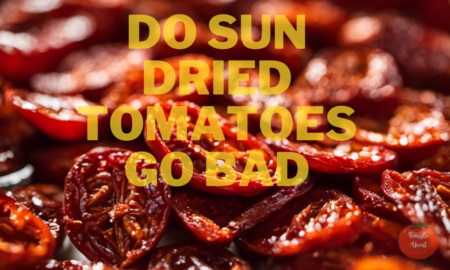In the world of tomatoes, where countless varieties compete for the gardener’s attention, one stands out for its remarkable resilience in the face of sweltering temperatures—the Flamenco tomato. This indeterminate heirloom variety has been capturing the hearts of gardeners across the United States, particularly in sun-scorched regions like Arizona and Florida, where its heat tolerance sets it apart from its wilting counterparts. Keep reading to learn about this amazing tomato variety!
Introducing the Flamenco Tomato
The Flamenco tomato is not just another pretty face in the tomato patch. This vibrant variety is a true performer, dancing through the hottest summer days with the grace and tenacity of its namesake, the passionate flamenco dancers of Spain. Originally developed for regions with long, hot growing seasons, the Flamenco tomato has become a go-to choice for gardeners battling the effects of climate change and seeking resilient, high-yielding plants.
Unlike heat-sensitive varieties that drop their blossoms or produce mealy fruits under intense sun, the Flamenco tomato thrives. Its robust vines can stretch up to 8 feet tall, requiring sturdy support, while its deep root system taps into cooler soil layers, helping it stay hydrated and productive even when temperatures soar above 95°F (35°C). This adaptability makes it a star in areas where traditional tomatoes struggle, offering a reliable harvest from early summer through fall.
The History of the Flamenco Tomato
The story of the Flamenco tomato is one of careful selection and adaptation. While its exact origin is somewhat enveloped in mystery, tomato enthusiasts believe it was developed in the late 20th century, possibly in Florida or another southeastern state known for its hot, humid summers. The goal was clear: create a tomato variety that could withstand the intense heat without sacrificing flavor or productivity.
Some speculate that the Flamenco tomato’s genetic makeup includes traits from other heat-tolerant heirlooms like the Silvery Fir Tree tomato from Russia or the Florida tomato from Brazil. These varieties have a long history of adaptation to challenging climates, whether it’s the short, intense summers of Siberia or the tropical heat of South America.
Over generations, seed savers and small-scale breeders worked to stabilize the Flamenco’s desirable traits. They selected plants that continued to set fruit under high temperatures, resisted common diseases like fusarium wilt and verticillium, and produced tomatoes with the right balance of sweetness and acidity. By the early 2000s, the Flamenco tomato had gained a following among southern gardeners, and its reputation began to spread northward as climate patterns shifted.
Quick Facts about the Flamenco Tomato
- Color: Deep, passionate red with occasional orange blush near the stem
- Size: Medium to large, typically weighing 8-12 ounces
- Shape: Slightly flattened globe with gentle ribbing, like a beefsteak
- Taste: Balanced sweet-tart flavor with unique smoky undertones
- Texture: Meaty and juicy, with small seed cavities
- Plant Type: Indeterminate vines, stretching 6-8 feet tall
- Days to Maturity: Around 75 days from transplanting
- Yield: High, 20-30 pounds per healthy plant
- Heat Tolerance: Exceptional, thrives above 95°F (35°C)
- Hardiness Zone: Best in zones 5-10, especially hot regions
Pros
- Outstanding heat tolerance, perfect for warm climates
- Long harvest season, from early summer to late fall
- Complex flavor: sweet, tangy, with a smoky hint
- Good disease resistance (fusarium, verticillium, tomato mosaic virus)
- High productivity even in challenging conditions
- Versatile in the kitchen (fresh eating, cooking, grilling)
- Meaty texture holds up well in sandwiches and sauces
- Adapts well to hot regions like Arizona and Florida
Cons
- Requires sturdy support due to vigorous vines
- Needs full sun, which can be intense in some areas
- Thin skin bruises easily, a short shelf life after picking
- Not ideal for cooler, short-season regions
Some find the smoky note unusual for a tomato - Less commonly found than mainstream varieties
- May need extra watering in extreme heat
- Not the quickest to ripen compared to some early types
The Flavor Profile of Flamenco Tomato
The unassuming Flamenco tomato packs an incredible punch of flavor that surpasses many prettier hybrids. Each bite delivers a delightful balance of rich sweetness and bright, tangy acidity. Beyond the quintessential tomato essence, you’ll detect enticing fruity undertones with hints of citrus, berries, and smoky spice.
The juicy flesh has a delicate, velvety texture that melts in your mouth, unlike the mealiness of some firm hybrids. Biting into a ripe Flamenco rewards you with dribbling sweet-tart juices. Enjoy these tomatoes immediately after harvesting for the ultimate flavor experience. While the thin skin shortens shelf life, the rich taste and tender texture make it a worthwhile sacrifice.
The pleasant acidity adds a delightful tang balanced by the right amount of sweetness. The petite size makes Flamencos ideal for snacking or adding to dishes. Give this heat-tolerant variety a chance, and you’ll discover an incredible flavor reminiscent of prized heirlooms.
Growing the Flamenco Tomato
Planting Zones
The Flamenco tomato excels in hot, arid regions, making it an ideal choice for gardeners in USDA hardiness zones 10 and 11. However, its heat tolerance has also led to successful cultivation in other areas with hot summers, such as parts of Colorado.
Ideal Growing Conditions
To thrive, Flamenco tomatoes require well-draining, loamy soil with a slightly acidic pH between 6.2 and 6.8. Amending the soil with compost and crushed eggshells can provide essential nutrients and prevent blossom end rot. These plants also need at least 6 to 8 hours of direct sunlight each day and consistent moisture without waterlogging.
Planting and Spacing
In warm climates, gardeners can start Flamenco tomato seeds indoors as early as December and transplant the seedlings outside in late February or early March. When planting, space the tomato plants 24 to 36 inches apart to allow for proper air circulation and growth.
Caring for Flamenco Tomato Plants
Watering and Fertilizing
Consistent moisture is crucial for Flamenco tomato plants. Water them regularly at the base, aiming for about an inch of water per week, and apply a 2 to 3-inch layer of mulch around the plants to retain moisture. Fertilize with a balanced tomato fertilizer, following the manufacturer’s instructions, to provide essential nutrients for optimal growth and fruit production.
Pruning and Training
While not strictly necessary, pruning and pinching off suckers (the small stems that grow in the joints between the main stem and branches) can help direct the plant’s energy towards fruit production. Regular pruning also improves air circulation and reduces the risk of disease.
Pest and Disease Management
Despite their breeding for disease resistance, Flamenco tomato plants are still susceptible to common tomato pests and diseases like blight, fusarium wilt, and verticillium wilt. Implementing preventive measures, such as crop rotation, proper spacing, and avoiding overhead watering, can help minimize these issues. Additionally, companion planting with marigolds, catnip, fennel, dill, basil, and cilantro can repel common tomato pests.
Harvesting Your Flamenco Tomatoes
One of the joys of growing Flamenco tomatoes is their extended harvest period. In warm climates, you can expect ripe fruits from about 75 days after transplanting, continuing until the first frost—which might not come until late November in some areas!
To determine ripeness, look beyond color. Flamenco tomatoes develop their full red hue a bit before peak flavor. Gently squeeze the fruit; it should yield slightly without feeling soft. Another sign is when the green “shoulder” near the stem turns red-orange.
For the best flavor, let tomatoes ripen fully on the vine. However, if temperatures exceed 95°F (35°C) for several days, or if heavy rains are forecast, pick fruits at the “breaker” stage (just starting to blush) and ripen them indoors at room temperature.
Don’t refrigerate your tomatoes, as this dulls their flavor. Instead, store them stem-side down on a counter, out of direct sunlight. They’ll keep for about a week, though they’re best enjoyed within 2-3 days of picking.
Preserving Your Flamenco Tomato Harvest
If you find yourself with an abundance of Flamenco tomatoes, there are several preservation methods to extend their shelf life beyond the growing season. Canning, freezing, and drying are all effective ways to enjoy your homegrown Flamencos long after the plants have stopped producing.
Companion Planting and Crop Rotation
Companion planting and crop rotation can help optimize the health and productivity of your Flamenco tomato plants. Planting basil, marigolds, or nasturtiums nearby can help repel pests and enhance flavor. Avoid planting tomatoes in the same location year after year, as this can lead to a buildup of soil-borne diseases. Instead, rotate your Flamenco plants with other crops like lettuce, cucumbers, or beans to break disease cycles and maintain soil health.
Flamenco Tomato Recipes
Flamenco Caprese Salad
Layer sliced Flamencos with fresh mozzarella and basil leaves. Drizzle with quality olive oil and balsamic vinegar for a simple, elegant appetizer that showcases the tomato’s balanced taste.
Gazpacho Andaluz
Blend Flamencos with cucumber, bell pepper, bread, garlic, and sherry vinegar. The tomato’s smokiness shines in this cold Spanish soup.
Grilled Flamenco & Manchego Skewers
Thread tomato halves with manchego cheese. Grill for a smoky-savory tapas that’s pure Spain.
Flamenco Tomato Jam
Simmer chopped Flamencos with sugar, lemon juice, and spices until thick. This unexpected treat brings out the tomato’s natural sweetness, perfect on crackers with cream cheese.
Flamenco Tomato Tarts
Fill tart shells with a mixture of Flamencos, goat cheese, caramelized onions, and fresh herbs for a flavorful appetizer or light meal.
Where to Find Flamenco Tomato Plants and Seeds
Flamenco is a lesser-known tomato variety, but seeds can be found through these sources:
- Territorial Seed Company – Seeds: $4.50 per packet.
- Tomato Growers Supply Company – Seeds: $3.25 for 20 seeds.
- Victory Seeds – Seeds: $3.00 per packet.
- Botanical Interests – Seeds: $4.99 per packet.
Conclusion
The Flamenco tomato is a true gem for gardeners in hot climates, offering a reliable and bountiful harvest of tangy, sweet tomatoes. Its heat tolerance, disease resistance, and delightful flavor make it a must-have addition to any vegetable garden.
Whether you’re preserving your harvest, companion planting, or trying new recipes, the Flamenco tomato is sure to become a cherished favorite. So, roll up your sleeves, plant your Flamenco seeds or starts, and get ready to enjoy a delicious and rewarding harvest all season long.
Have you grown Flamenco tomatoes in your garden? Share your experiences, tips, and favorite recipes in the comments below!


